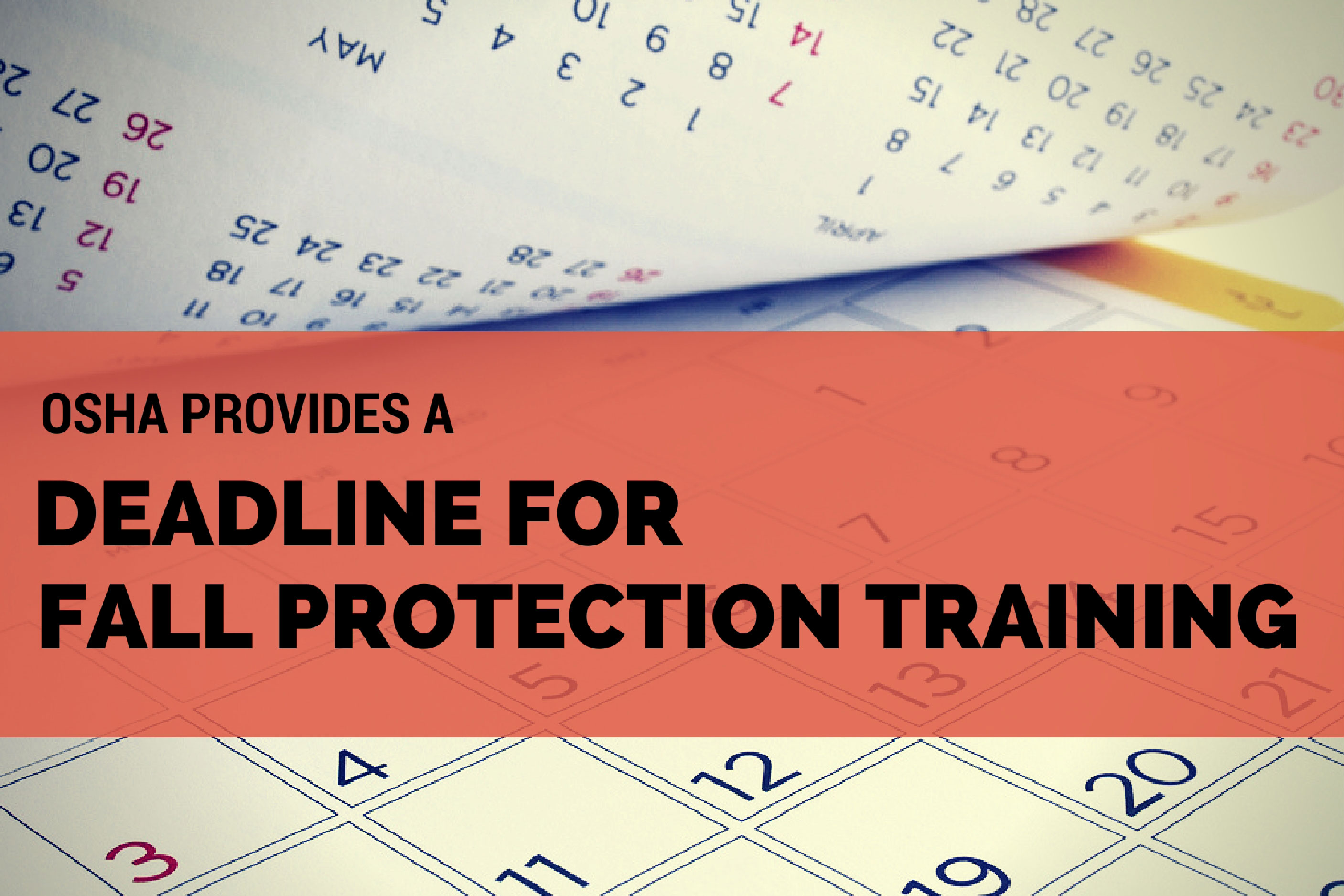OSHA Provides a Deadline for Fall Protection Training

It seems like we’ve been talking about the “upcoming” and “recently passed” Walking/Working Surfaces rule for a long time and many people may remember that contained within the rule were some delayed effective dates. This means that while most of the regulation was effective this past January, employers were given some extra time to come into compliance with certain aspects of the law. Unfortunately, for those not paying close attention, these delayed dates have started rolling around, and they may have caught some employers completely off guard. In fact, one key date just passed and, if you were not aware, you could find yourself in non-compliance.
As of May 17, OSHA requires that all workers are trained in both fall hazards and any equipment covered by the final rule. Understand that this is not a new training requirement. Workers in fall protection situations should already be trained, however, you need to ensure that they have now received training on any new aspects of the regulation that apply to them. This training includes what hazards they are exposed to and how you are protecting them, as well as how to utilize equipment such as Personal Fall Arrest Systems (PFAS – Harness, lanyard, anchor point). If you’ve already done this, congratulations! Keep on doing what you’re doing!
If you were putting off training employees, you no longer have that option. Now that we’re past the deadline, here’s what OSHA requires you to do ASAP, to come into compliance:
1) Each employee must be trained by a qualified person, which, according to OSHA, is someone who “by possession of a recognized degree, certificate, or professional standing, or who by extensive knowledge, training and experience, has successfully demonstrated his ability to solve or resolve problems relating to the subject matter, the work, or the project.” It is important you ensure that the person delivering training meets this definition, not only so that your employees are receiving all the necessary information to keep them safe, but to ensure your compliance with the requirement should your training come under scrutiny.
2) Each employee must be trained on what fall hazards they are exposed to, how to recognize fall hazards, and what procedures they need to follow in order to keep themselves safe.
3) Employees must be trained on how to properly install, inspect, operate, maintain and disassemble fall protection systems that they use.
4) Each employee must be trained in the correct use of fall protection systems, including proper hook-up, anchoring, tie-off techniques, as well as methods of inspection and storage as specified by the manufacturer.
In addition, OSHA offers further specifics to which this deadline applies:
1) Employees must be trained in the proper care, inspection, storage and use of equipment.
2) Employees that use dockboards must be trained to properly place and secure it.
3) Employees who use rope descent systems must be trained in proper rigging and equipment use.
4) Employees who use a designated area must be trained in their proper setup.
OSHA also notes that retraining is necessary in certain situations, such as:
- When an employee demonstrates that they don’t have the knowledge or skill they should have in regards to fall protection,
- When workplace changes make the old training obsolete,
- Or when new fall protection systems or equipment are being used.
Finally, OSHA requires that training must be understandable. While this may sound like common sense, it is not unheard of for employers to have employees sit through a training session in a completely unfamiliar language just to make sure they receive documentation of training. However, this caveat doesn’t just apply to which language a person understands. If a person is illiterate, for example, this requirement could mean that they must be presented the information – and tested - orally. As an employer, you will have the burden of proving that your employees understood the training, should OSHA audit your company. This is often accomplished through some type of exam, whether written, oral, or practical. Whichever way you choose, be prepared because OSHA will ask, “How did you know they understood it?”
If you are one of the companies that has not trained your people, get on it immediately. A great number of incidents, injuries, and fatalities can be traced back to the fact that people were not properly trained for the work they do and the safe ways in which to perform that work. Train your people now, before something happens. Keep them safe by arming them with knowledge.
To find a fall protection training course near you, we recommend checking the following online calendars:
Finally, as a reminder, below are the remaining upcoming deadlines for the Walking/Working Surfaces rule:
- *November 20, 2017 – Inspecting and certifying permanent anchorages for rope descent systems.
- *November 19, 2018 – Installing personal fall arrest or ladder safety systems on new fixed ladders greater than 24’ in length and on replacement ladders, including on outdoor advertising structures.
- *November 19, 2018 – Ensuring that all fixed ladders over 24’ including outdoor advertising structures, are equipped with a cage, well, personal fall arrest system, or ladder safety system.
- *November 18, 2036 - Replacing all cages and wells used as fall protection with ladder safety devices or personal fall arrest systems.